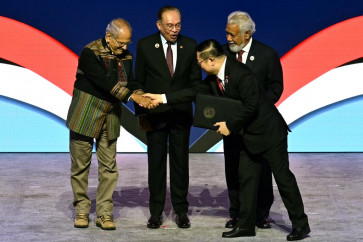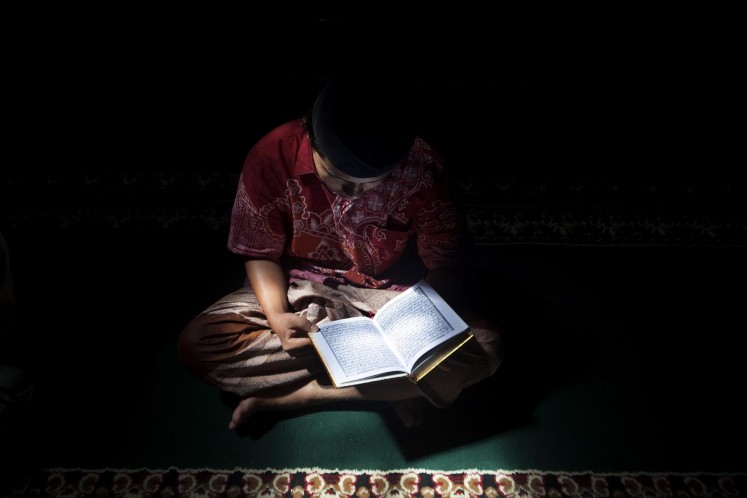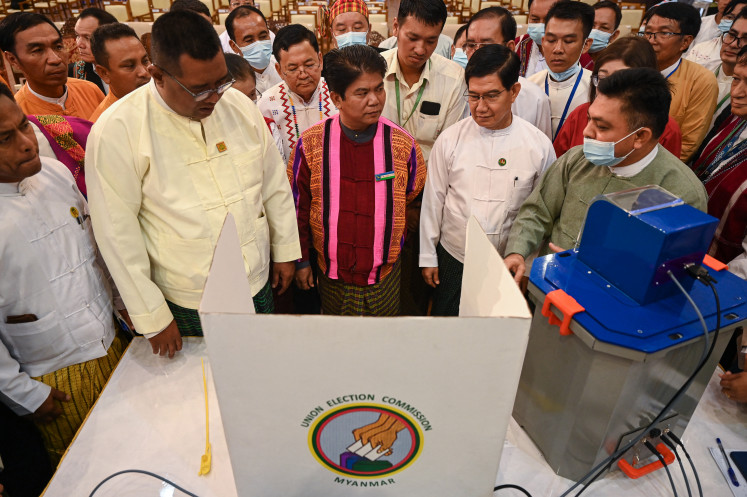Popular Reads
Top Results
Can't find what you're looking for?
View all search resultsPopular Reads
Top Results
Can't find what you're looking for?
View all search resultsAsian financial arrangement: Regionalism vs multilateralism
On May 4, 2011, the ASEAN+3 Macroeconomic Research Office (AMRO), an independent surveillance and regional monitoring office, was officially established during the 14th ASEAN+3 Finance Ministers’ Meeting in Hanoi, Vietnam, which was held during the 44th annual meeting of the Asian Development Bank
Change text size
Gift Premium Articles
to Anyone
O
n May 4, 2011, the ASEAN+3 Macroeconomic Research Office (AMRO), an independent surveillance and regional monitoring office, was officially established during the 14th ASEAN+3 Finance Ministers’ Meeting in Hanoi, Vietnam, which was held during the 44th annual meeting of the Asian Development Bank.
Wei Benhua from China was appointed as the director of AMRO.
AMRO is crucial to the operation of the Chiang Mai Initiatives Multilateralization (CMIM). This is a positive development after the 1997-1998 Asian financial crisis. However, technical coordination with multilateral institutions, especially the IMF, is needed so that regionalism will not be in conflict with nor irrelevant to multilateralism.
After the Asian financial crisis, ASEAN+3 economists, some of whom were disappointed with the management of the crisis under the IMF, realized the need to establish an economic institution to safeguard the ASEAN+3 countries from another financial crisis and exchange rate speculation attack, as well as to facilitate regional economic cooperation.
Thirteen countries consisting of the 10 ASEAN countries plus China, Japan and Korea, now termed the ASEAN+3 countries, gathered together in December 1997 in Kuala Lumpur to discuss the establishment of a regional economic institution. This was the first summit to begin the Asian regional economic cooperation after the 1997-1998 financial crisis.
On May 6, 2000, the Chiang Mai Initiative (CMI) Bilateral Swap was initiated to protect member countries from short-term liquidity crises by borrowing from reserves of partner countries.
By 2004, the ASEAN+3 countries had managed to agree on five main pillars of regional financial arrangements, namely the CMI, the Asian Bond Market Initiatives, the Economic Review and Policy Dialogue or ERPD, as well as the ASEAN+3 Research groups.
In 2008, the CMI was transformed into a much stronger CMIM, and a self-managed reserve pool amounting to US$80 billion based on the CMIM was created.
On Feb. 19, 2009, the ASEAN+3 countries met in Phuket, Thailand, to advance the agreement on expanding the reserve pool to $120 billion in order to better safeguard member countries against liquidity crisis. Commitment for more integration was reiterated as Asian exports slumped.
On May 3, 2009, the 12th meeting of the ASEAN+3 Finance Ministers concluded with significant steps toward institutionalizing ASEAN+3 regional financial integration and activating the regional reserve pool.
Three main agreements were reached. The first agreement was on the proportion of the regional reserve pool that based the voting rights. China and Japan would hold the highest, co-equal proportion of the reserve pool.
Japan and China, including Hong Kong, would each contribute $38.4 billion, or 32 percent of the total. South Korea would provide $19.2 billion, or 16 percent. South Korea, Japan and China contribute a combined 80 percent of the money, while ASEAN will contribute 20 percent of the money.
There was also a split in the decision-making process: Fundamental issues would be based on consensus while lending issues would be based on majority voting. The second agreement was on the maximum amount of lending for each member. The third agreement was on the creation of an independent regional surveillance unit that was later called AMRO.
The establishment of AMRO was crucial to the functioning of the CMIM and set a precedent for the regional financial integration. Despite the bilateral and multilateral swap agreements, none of the swap agreements has been activated since 2000.
One of the reasons is that only 20 percent of the CMI credit lines can be disbursed without the potential borrower having a lending program with the IMF. Because of bad experiences with the IMF for some of the ASEAN+3 countries during the 1997 Asian financial crisis, they are reluctant to deal with the IMF surveillance program. One of the goals of a more transparent and meaningful AMRO is therefore to increase the CMI credit lines that can be de-linked from the IMF surveillance process.
Indeed, regional and multilateral institutions need coordination. Recently, the IMF overhauled its lending and conditionality framework, including the new Flexible Credit Line (FCL) and High Access Precautionary Arrangement (HAPA), to help with global liquidity issues.
The IMF has also boosted its funding resources to lend to its members for crisis resolution through a 10-fold expansion of the New Arrangement to Borrow (NAB) — a set of credit arrangements between the IMF and 26 old plus 13 new members — that took effect on March 11, 2011.
The reforms increase the NAB from about $53 billion to $576 billion. All these reforms will boost the IMF lending and borrowing instruments both in terms of the size and speed of bailouts.
With the newly operating AMRO, technical coordination between the AMRO and the IMF’s surveillance programs is demanded. Otherwise, they can either be overlapping, making either the regional or global financial mechanism redundant or contradictory, making policy conditionality for financial supports conflicting. AMRO has advantages over IMF surveillance programs in terms of the speed of updates and regional ownership (and therefore trust), while IMF has more technical experiences.
Already 80 percent of CMIM is linked to the IMF surveillance program, which should be an incentive to streamline IMF (including FCR and HAPA conditionality) and AMRO surveillance processes (and conditionality for bailouts). The recent joint EU-IMF rescue packages for the PIG economies (Portugal, Ireland, Greece) have shown that joint regional-multilateral collaborations for troubled economies were imperative, especially that $120 billion is relatively small for a size of a bailout.
The writer is a researcher at the Centre for Strategic and International Studies (CSIS) and a lecturer at the University of Indonesia.










